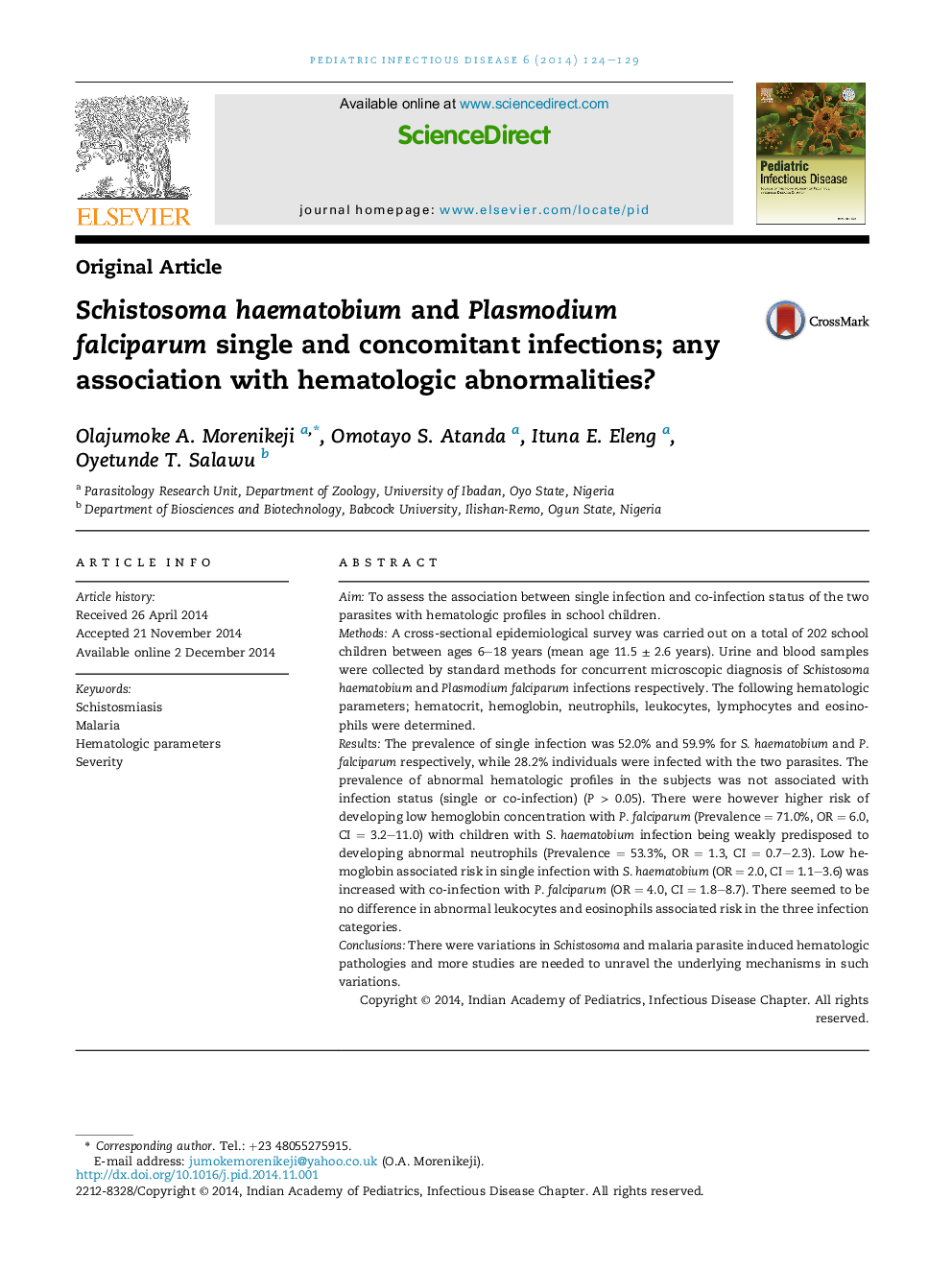| Article ID | Journal | Published Year | Pages | File Type |
|---|---|---|---|---|
| 3382371 | Pediatric Infectious Disease | 2014 | 6 Pages |
AimTo assess the association between single infection and co-infection status of the two parasites with hematologic profiles in school children.MethodsA cross-sectional epidemiological survey was carried out on a total of 202 school children between ages 6–18 years (mean age 11.5 ± 2.6 years). Urine and blood samples were collected by standard methods for concurrent microscopic diagnosis of Schistosoma haematobium and Plasmodium falciparum infections respectively. The following hematologic parameters; hematocrit, hemoglobin, neutrophils, leukocytes, lymphocytes and eosinophils were determined.ResultsThe prevalence of single infection was 52.0% and 59.9% for S. haematobium and P. falciparum respectively, while 28.2% individuals were infected with the two parasites. The prevalence of abnormal hematologic profiles in the subjects was not associated with infection status (single or co-infection) (P > 0.05). There were however higher risk of developing low hemoglobin concentration with P. falciparum (Prevalence = 71.0%, OR = 6.0, CI = 3.2–11.0) with children with S. haematobium infection being weakly predisposed to developing abnormal neutrophils (Prevalence = 53.3%, OR = 1.3, CI = 0.7–2.3). Low hemoglobin associated risk in single infection with S. haematobium (OR = 2.0, CI = 1.1–3.6) was increased with co-infection with P. falciparum (OR = 4.0, CI = 1.8–8.7). There seemed to be no difference in abnormal leukocytes and eosinophils associated risk in the three infection categories.ConclusionsThere were variations in Schistosoma and malaria parasite induced hematologic pathologies and more studies are needed to unravel the underlying mechanisms in such variations.
